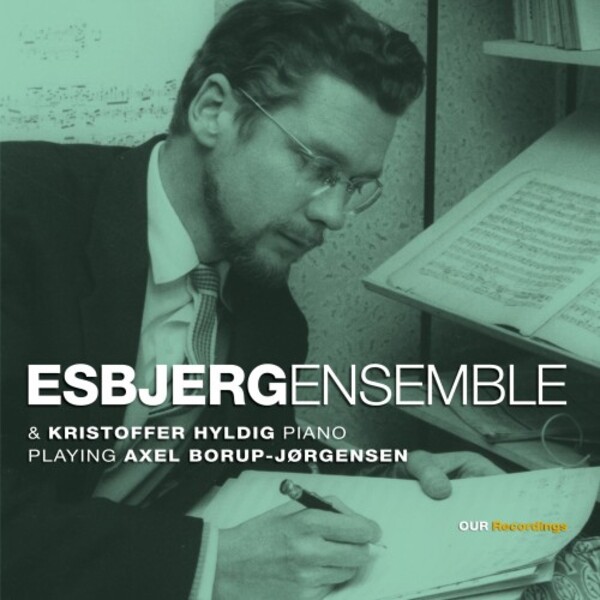BORUP-JØRGENSEN 'Silence is Music Too'
View record and artist detailsRecord and Artist Details
Genre:
Chamber
Label: OUR Recordings
Magazine Review Date: 01/2025
Media Format: CD or Download
Media Runtime: 66
Mastering:
DDD
Catalogue Number: 8 226925

Tracks:
| Composition | Artist Credit |
|---|---|
| Intrada |
Axel Borup-Jørgensen, Composer
Esbjerg Ensemble |
| Trio |
Axel Borup-Jørgensen, Composer
Esbjerg Ensemble Kristoffer Nyholm Hyldig, Piano |
| Ricostruzioni |
Axel Borup-Jørgensen, Composer
Esbjerg Ensemble |
| Malinconia |
Axel Borup-Jørgensen, Composer
Esbjerg Ensemble |
| Distichon |
Axel Borup-Jørgensen, Composer
Esbjerg Ensemble Kristoffer Nyholm Hyldig, Piano |
| Rapsodi |
Axel Borup-Jørgensen, Composer
Esbjerg Ensemble |
| mikroorganismer |
Axel Borup-Jørgensen, Composer
Esbjerg Ensemble |
Author: Guy Rickards
Axel Borup-Jørgensen (1924-2012) was arguably the most singular Danish composer in a golden age of innovators and individualists. A childhood spent mostly in Sweden fostered a different outlook from his compatriots, although he returned to Denmark to study with Poul Schierbeck and Jørgen Jersild. He visited the Darmstadt Summer Schools in 1959 and 1962, but it was Ligeti’s example (and use of micropolyphony) that provided the most lasting influence. Having worked out his personal manner, he cultivated and refined it for the rest of his career.
Borup-Jørgensen’s music mostly uses compact, free forms, often for chamber and instrumental forces, as here, or on OUR’s percussion-themed album, warmly welcomed by Richard Whitehouse (9/14). This newcomer opens with another percussion solo, Intrada (1993 94), grippingly performed by the Esbjerg Ensemble’s resident player, Christian Martinez. Rhythmically, it is the most exciting work featured, with a real sense of drive that the couplings largely do not share. The Trio for clarinet, cello and piano (1988 90) is a good example of the prevailing tendency of his later output for slow-moving, elegiac or meditative music, often dispensing with metre or bar lines, much of it in the upper registers of the instruments.
The programme broadly traverses a backward timeline from these later works to one of his earliest, the 20 tiny sketches for string quartet, micro-organisms (1956). The centre of the programme is a group composed during 1972 74, all built as sequences of brief, interrelated sections, the textures at times very fragmented: Ricostruzioni (‘Reconstructions’), his sole wind quintet; Malinconia (‘Melancholy’) for string quartet; and the harsh duo Distichon for violin and piano. (The Rhapsody for solo viola – compellingly performed by Michel Camille – although dated 1994 96, is based on a 1984 original.) The overall effect is rather like the outer layers being removed from a painting to reveal the preliminary forms underneath, and the Esbjerg Ensemble, joined by regular collaborators Kristoffer Hyldig, Niklas Kallsoy Mouritsen, Joel Bardolet and Bernat Prat Sabater, make impeccable guides through these fantastical musical landscapes. While undeniably stylistically of the post-war modernist period, Borup-Jørgensen’s music possesses a very particular sensibility that marks his compositions as unique in the music of Northern Europe. Mette Due’s beautifully clear sound provides the perfect platform for its wider appreciation.
Discover the world's largest classical music catalogue with Presto Music.

Gramophone Digital Club
- Digital Edition
- Digital Archive
- Reviews Database
- Full website access
From £8.75 / month
Subscribe
Gramophone Full Club
- Print Edition
- Digital Edition
- Digital Archive
- Reviews Database
- Full website access
From £11.00 / month
Subscribe
If you are a library, university or other organisation that would be interested in an institutional subscription to Gramophone please click here for further information.




